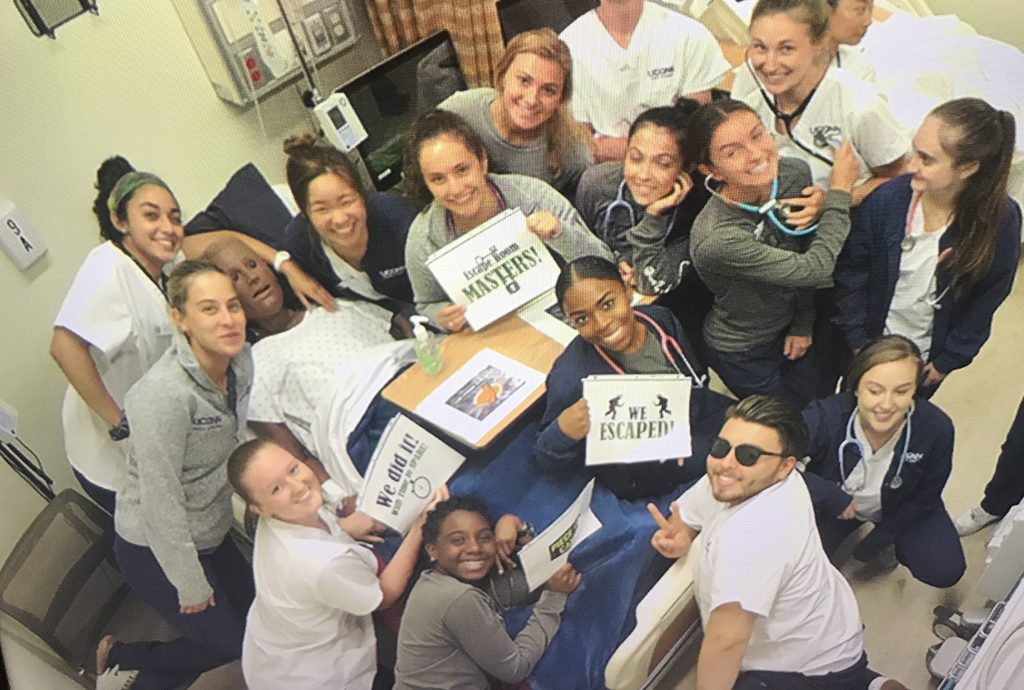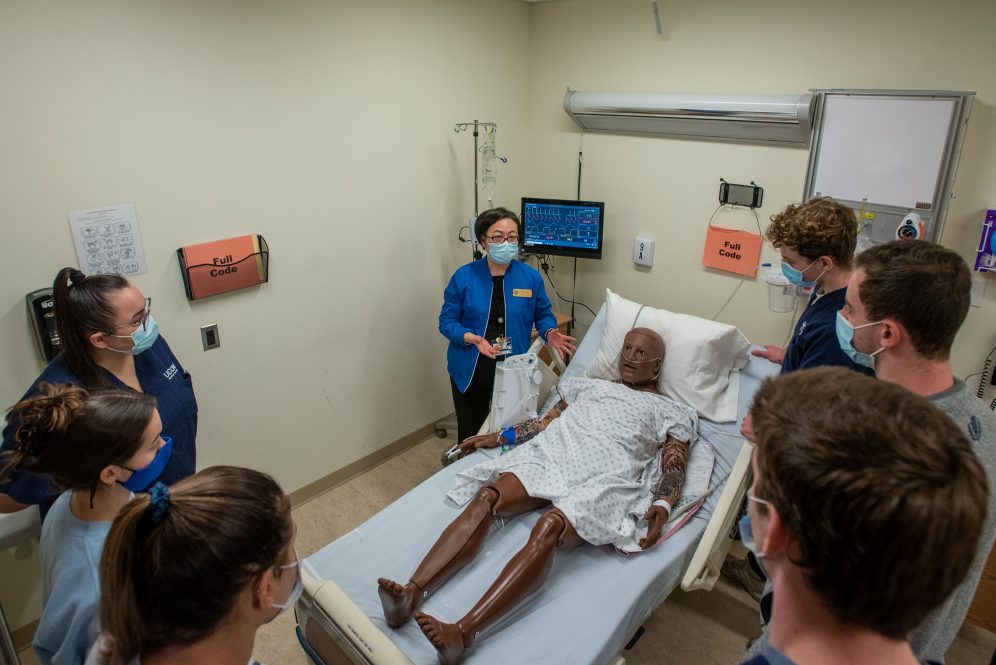An 84-year-old patient comes into the hospital accompanied by a family member. Diagnosed with a urinary tract infection, the patient is admitted for treatment, where a team of nurses will be responsible for his care – including the safe administration of his medications.
The nurses need to overcome a few obstacles – a puzzle, a riddle, a couple of locked containers – to get his medication orders. Once they get them, there’s another problem – something’s wrong with the orders. There’s a medication on them that doesn’t make sense. What do they do?
The nurses pull out their “ask-the-audience” lifeline, getting helpful advice from some additional teammates, and communicate the errors to the patient’s doctor – who gives them another riddle to solve.
A few more clues, a key, and a padlock later, the nurses have all the supplies they need to safely administer the correct medications to help their patient get better.
No, this isn’t the plotline of some wild television medical drama. It is, instead, an innovative simulation exercise designed to teach valuable skills to undergraduate students at the UConn School of Nursing.
And it’s based on a popular game where teams of players search for clues, accomplish tasks, and solve problems in order to accomplish a goal: the escape room.

“I had been to countless simulation conferences – nursing simulations – and every time I went I was drawn to the escape room sessions,” says Carrie Eaton, an assistant clinical professor and the former director of simulation-based education at the School of Nursing.
Simulation is a critical component of nursing education, providing the opportunity for nursing students to train hands-on for work in clinical settings and allowing them to learn from their mistakes without endangering real patients. Escape rooms are an emerging component of simulation education, Eaton notes, because they help students to engage critical thinking skills while working together as a team.
“I knew I wanted to implement an escape room,” Eaton says. “I had all the concepts, and I had all the ideas. I needed the right expert, and Dawn came along, and I told her everything I knew and everything I had learned, and said, ‘Here is what I’m looking for. Do you think you can meet the challenge?’ And she exceeded the challenge.”
Clinical Instructor Dawn Sarage is a medical-surgical nurse who joined the School of Nursing’s simulation faculty in 2019.
“Carrie brought the idea to me, and I ran with it,” Sarage says. “Escape rooms are very interesting. They incorporate game theory into simulation by placing learners in an environment where they need to solve several different puzzles and riddles to escape.”
The simulation involving the 84-year-old patient with a urinary tract infection was offered to junior and senior nursing students as an introduction to their simulation learning curriculum for the first time in Fall 2019. Sarage, Eaton, and their colleague — Associate Clinical Professor Barbara O’Neill – published a paper late last year detailing their experience with their escape room simulation in the journal Simulation and Gaming.
“The nice thing about escape rooms is that learners work together as a team to solve simple to complex puzzles or riddles,” says Sarage, “and while doing that, are able to demonstrate a mastery of the topic we’re using in that escape room. I think it’s a fun way to meet the needs of our learners.”
The School of Nursing’s Clinical Simulation Learning Center is equipped with several lifelike manikins that represent the diverse population of patients that nurses will encounter in clinical work. Some of the manikins simulate breathing, have pulses, can talk, and allow the students to perform injections.
A manikin served as the patient for the escape room, while two live participants played the roles of the family member and health care provider. The simulation took four hours, with the first hour used as a session to introduce the objectives of the exercise. The second hour involved the actual escape room simulation, and the final two hours were used to debrief with the students following the exercise.
Throughout the simulation, the students had to solve puzzles and riddles that invoked concepts of medical knowledge and patient care and safety while also utilizing skills like ISBAR – which stands for Introduction, Situation, Background, Assessment, and Recommendation and is a communication tool utilized frequently in health care – to accomplish their tasks and exit the escape room.
Both Sarage and Eaton said the simulation was extremely successful.
“The students loved the escape room,” says Eaton. “They also love Professor Sarage. She is fantastic, so it’s hard not to love anything she does.”
“All of the students were able to escape, and they were very proud of themselves,” Sarage says. “I think that this simulation was harder than they had anticipated, so by escaping they were able to prove to themselves that they could do it – that they could work together as a team to safely administer the medications and care for their patient.”
While limitations on in-person learning due to COVID-19 put the nursing escape rooms on hiatus, both Sarage and Eaton are hopeful that they will be revived in the near future as the pandemic restrictions ease. They also have plans to develop new escape room scenarios for that can be used for simulations in other nursing disciplines.
“I have a lot of escape room content in the works, but my patients will all be pregnant,” says Eaton, who is also a labor and delivery nurse.
Eaton also hopes to engage with students beyond the School of Nursing who have an affinity for escape rooms and work with them to develop new simulation experiences.
“There are a lot of students, I’m sure, at the University who have fantastic escape room experience and background, somebody from somewhere other than nursing, and maybe work towards a shared grant or a collaboration to create an escape room that’s really student driven, that comes from the mind of a young learner,” she says. “So, there’s so much more to be done.”
For faculty or instructors in other disciplines considering developing an escape room as a learning tool, Eaton’s advice is to keep it simple and beta test their scenario before using it as part of a class.
“I think escape rooms are a really nice way to spark student interest and engagement while also meeting learning objectives,” Sarage says. “Even though these escape rooms may seem complicated, once you understand the basic steps of it and have an idea of what resources you need, it can actually be quite easy and fun.”



